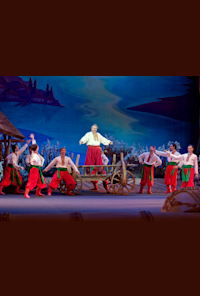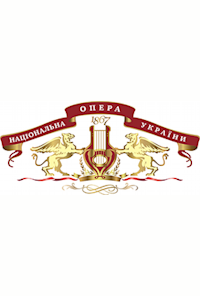I'm waiting for you, blackbeard,
Let's go, dear, to our native land ...
The words of the touching duo of Andriy and Oksana from SS Gulak-Artemovsky's opera "Zaporozhets on the Danube" still excite people. In our imagination there are times when, at the behest of Queen Catherine II, the Zaporozhian Sich was destroyed, and the Cossacks, in order to avoid the king's mercy to be enslaved, went to the "receptions" of the Turks, settled on the Danube for many years ...
But before this tragic event in the history of the Ukrainian people, there were years of victorious Cossack glory. The name "Cossack" is of Tatar origin and means free warrior, horseman. Under what circumstances did the Cossacks appear?
Turkey, or as it was then called, the Ottoman Porte, became in the XV-XVI centuries the largest and most powerful state not only in the East but also in the world. Turkish sultans conquered more than 30 states, spreading their power over vast areas. Their possessions in the west reached the Strait of Gibraltar, and in the east bordered on Persia. In the south, they conquered almost all Arab countries. Turkish fortifications appeared on the western and northern shores of the Black Sea, and the entire Crimean coast was "bristled" with fortresses. Attacks by Tatar and Turkish feudal lords became a terrible disaster for the Slavic peoples, including Ukraine. The south and east of Ukraine were defenseless against attacks by Tatar and Turkish invaders. Everyday danger made me think about defense. Therefore, the Cossacks put in the most convenient places for defense small fortifications-towns or Sich. They were called cuttings because they were made from chopped (cut) logs. One of such sichs was probably on Khortytsia. Somewhere in the middle of the 16th century, individual Sichs united around one threshold, the main Sich. Thus arose the famous Zaporozhian Sich - the center and at the same time the organization of the Free Cossacks on the Dnieper rapids.
About 400 kilometers from Kaniv, the Dnieper turned sharply to the southwest. The mighty current of the river ran into a high stone ridge - the famous Dnieper rapids, behind which began the region, which was later called Zaporozhye, where the Ukrainian knights went.
The Cossacks waged a heroic struggle against the Tatar and Turkish invasions, often getting enemies in their lairs, equipping campaigns by land and sea to the Crimea and Turkey, waged an irreconcilable struggle with the Polish nobility, who for centuries tried to subdue the Ukrainian people.
It is necessary to recall the circumstance that became the main reason for the liquidation of the Zaporozhian Sich.
The peasant war led by the Don Cossack Omelyan Pugachev found a response and support in Ukraine, particularly in Zaporozhye. In the late summer of 1774, the tsarist government managed to drown in the blood of the uprising. Catherine II was horrified by the mass demonstrations of peasants and looked anxiously at the Zaporozhian Cossacks, who for more than two centuries actively resisted the enslavement of Ukrainian peasants. A convenient political moment for the destruction of the Zaporozhian Sich was for the Empress the end of the war with Turkey. General Tekeli was ordered to suddenly occupy Sich and disperse the Zaporozhian Cossacks. At the end of May 1775 the tsarist army treacherously entered Zaporozhye. Escaping the massacre and further enslavement, many Cossacks fled to Belgorod, where they sent a deputation to the Turkish sultan with a request to allow the establishment of a Cossack settlement on the Danube. This is how the Transdanubian Sich appeared, which lasted for more than 50 years (1775-1828) in Dobrogea (now it is the territory of Romania).
The Cossacks did not submit to free will, but under the rule of the Turkish Porte. The Sultan agreed to the Cossack liberties to have in his service soldiers of European glory, and set a condition for the newcomers - at his first request to supply one thousand Cossack troops.
Transdanubian Sich, being in foreign lands, adhered to their age-old customs. However, the Turks did not trust their "receivers" very much, they did not allow them to hold cavalry and artillery. As on the Zaporozhian side, the Transdanubian Sich consisted of huts. In the palanquin - a more extensive hut - housed a basket and military office. The huts had the same names as on Khortytsia.
The Transdanubian Sich did not lose ties with its native land, was constantly replenished with refugees from Ukraine, and preserved ancient customs. But in the late 20s of the XIX century. intolerable conditions have developed for the Transdanubians. An uprising against Turkish oppression became widespread on the Balkan Peninsula. The Turks also sent Transdanubian Cossacks against the Serbs and Greeks. But did the Cossacks fight against fellow Christians? And when the Russo-Turkish War (1828 - 1829) began, the Ottoman government decided to deport the Transdanubians to Egypt. Learning of this intention, Koshov Joseph Gladky decided to cross the Danube and settle again in Ukrainian lands.
On May 18, 1828, Koshov, together with 500 Transdanubians, took with them the Sich shrine - the church altar, Cossack charters, and went out to sea in boats. At the front was Emperor Nicholas I, who, given the popularity of the Sich in Ukraine, graciously received Joseph Gladky and twelve chicken chieftains. The Danube Cossack Regiment was created, which in 1831 was stationed near the Sea of Azov, between Berdyansk and Mariupol. Almost the entire local population was Ukrainian. The Azov Cossack army, whose commanding ataman was Joseph Gladky until 1853, guarded the Azov coast. During the Crimean War of 1853-1856, when the enemies intended to land in Mariupol, the Azov Cossacks defended the borders of the then Russian Empire with dignity.
However, the Azov Cossack army did not last long. In 1865 a royal decree was issued to relocate him to the Kuban. The Kuban Cossacks, although wearing Circassians with gazirs (sewn-on patrons), Kuban hats, spoke Ukrainian, sang old Zaporozhian songs and honored the memory of their grandfathers and fathers.
While in Ukraine in 1843, the outstanding Ukrainian singer, soloist of the Imperial Mariinsky Theater SS Gulak-Artemovsky had the opportunity to meet living prototypes of Andrew and Oksana, Karas and Odarka. Fascinated by the history of the Ukrainian Cossacks, their difficult fate in exile, he wrote the opera "Zaporozhets on the Danube" (1861 - 1862), which became the pinnacle of the composer's work.
SS Gulak-Artemovsky (1813-1873) was an extremely gifted and talented man, who was admired by the most demanding fans of vocal art not only in St. Petersburg and Moscow, but also in Italy, where he received professional opera training. A native of an ancient priestly family from Cherkasy region, he had a beautiful baritone singing in bishops' choirs, and then for more than 25 years on the stages of the Imperial Opera House, performing more than 50 parts, including Ruslan (Ruslan and Lyudmila M. Glinka), Mazetto Juan "by WA Mozart), Antonio, Enrico (" Linda di Chamonix "," Lucia di Lammermoor "by G. Donizetti), the main parts in the operas of O. Verstovsky, O. Dargomyzhsky, A. Rubinstein, oratorios by G. Berlioz, G. Rossini. His concerts, which consisted mainly of Ukrainian folk songs, became events in the artistic life of St. Petersburg and Moscow. M. Glinka, T. Shevchenko, K. Bryulov, V. Zhukovsky and others were fond of singing. In 1851 S. Gulak-Artemovsky made his debut as a composer. He owns music for the dramatic action "Pictures of Steppe Life", vocal and choreographic divertissement "Ukrainian Wedding", comedy-vaudeville "Night of Ivan Kupala", several romances and songs, including "Standing sycamore over the water", dedicated to T.G. Shevchenko.
The premiere of "Zaporozhets on the Danube" took place on April 14, 1863 on the stage of the Mariinsky Theater. SS Gulak-Artemovsky was the first director of the opera and performer of the Karas party. A year later, on October 6, 1864, the play took place at the Bolshoi Theater in Moscow. The performance was a great success, thanks to its bright melody, full of folk intonations.
After the Ems circular banning the publication of books in Ukrainian, the opera Zaporozhets on the Danube, although stage genres were not banned, was removed from the list of those allowed to be shown by censors. Catherine II's orders always and always destroyed everything that concerned the Zaporozhian Cossacks. And only 19 years later - on June 11, 1884 - the opera was staged again in Rostov-on-Don by the troupe of Mikhail Staritsky. The luminaries of the Ukrainian stage Marko Kropyvnytsky, Maria Zankovetska, Maria Sadovska-Barilotti took part in the performance.
On the stage of the National Opera of Ukraine "Zaporozhets on the Danube" was first performed in December 1934. For more than eighty years of history of the opera on the Kyiv stage, almost all leading singers of Ukraine sang in it - M. Donets, I. Patorzhynsky, E. Tsenov, M. Romensky, M. Chastiy, A. Kikot, V. Hrytsiuk, M. Shopsha. (Carp), M. Litvinenko-Wolgemut, O. Petrusenko, O. Zhila, V. Lyubimova, V. Bagatska (Odarka), M. Sokil, Z. Gaidai, N. Zakharchenko, M. Bem, O. Stanislavova, G Sholina, T. Ponomarenko, K. Radchenko, Z. Khrystych, E. Kolesnyk, G. Tsypola, L. Zabilyasta (Oksana), M. Grishko, K. Laptev, M. Shostak, S. Kozak, M. Shevchenko, Yu. Gulyaev, Zagrebelny, A. Mokrenko, D. Hnatyuk (Sultan), Yu. Kiporenko-Domansky, V. Boryshchenko, V. Kozeratsky, P. Bilinnyk, V. Timokhin, V. Tretyak, A. Solovyanenko, S Fitsich (Andrew).
The new production of the opera "Zaporozhets over the Danube" on the stage of the National Opera of Ukraine is in new musical and stage editions, but retains the traditional values of this immortal work, focuses on the best creative palettes of S. Gulak-Artemovsky.



